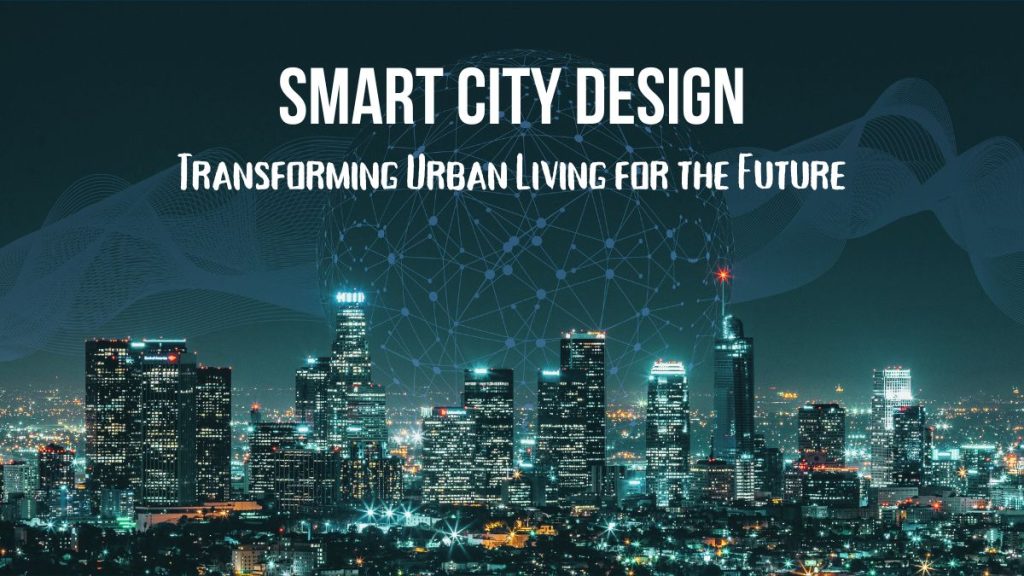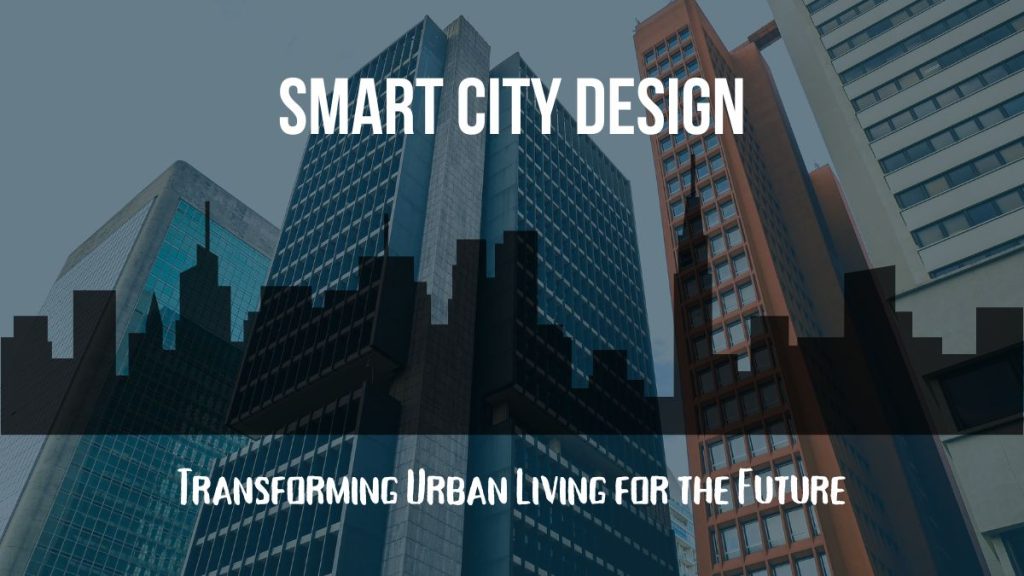Smart city design integrates technology and data to enhance urban living. It focuses on sustainability, efficiency, and quality of life.
Smart city design leverages advanced technologies to create interconnected urban environments. These cities aim to improve energy efficiency, reduce waste, and enhance public services. Key elements include smart grids, intelligent transportation systems, and IoT devices. Urban planners prioritize green spaces and sustainable building practices.
Enhanced connectivity ensures real-time data collection and analysis. This data-driven approach helps in informed decision-making and resource optimization. Residents benefit from improved safety, reduced traffic congestion, and enhanced public services. Smart city design ultimately aims to create livable, resilient, and sustainable urban spaces, promoting overall well-being and economic growth.
Related Article: Mixed Use Development: Unlocking Urban Innovation and Growth

Related Article: Urban Design Ideas: Transform Your Cityscape with Innovation
Smart City Concept
A smart city uses technology to improve the quality of life. It integrates information and communication technology (ICT) to manage resources efficiently. Smart cities aim to enhance urban living through innovation and technology. This concept involves creating a sustainable, efficient, and livable urban environment.
Key Elements
Several key elements define a smart city. These elements work together to create a seamless urban experience.
- IoT Devices: Internet of Things (IoT) devices collect real-time data.
- Smart Infrastructure: Includes smart grids, buildings, and transportation.
- Data Analytics: Big data and analytics for decision-making.
- Connectivity: High-speed internet and wireless networks.
- Citizen Engagement: Platforms for active community participation.
Goals And Objectives
A smart city has clear goals and objectives aimed at improving urban life. These goals focus on sustainability, efficiency, and quality of life.
- Energy Efficiency: Reduce energy consumption through smart grids.
- Environmental Sustainability: Use green technologies and reduce waste.
- Improved Mobility: Smart transportation systems to reduce traffic.
- Public Safety: Enhance safety with smart surveillance and emergency response.
- Economic Growth: Boost the economy with innovative solutions.
The smart city concept transforms urban living by leveraging technology. It aims to create cities that are sustainable, efficient, and enjoyable to live in.
Related Article: Urban Planning Trends: Transforming Cities for a Sustainable Future

Credit: stock.adobe.com
Related Article: Urban Design Principles: Transforming Cities for the Future
Sustainable Infrastructure
Sustainable infrastructure is essential for smart cities. It balances development and environmental care. Cities need to be both livable and eco-friendly.
Green Buildings
Green buildings use eco-friendly materials and designs. They save energy and reduce waste. These buildings often have better air quality.
- Use of natural light
- Efficient water systems
- Recycled materials
Smart technologies also play a role. Automated systems adjust lighting and temperature. This helps cut down on energy use.
Renewable Energy
Renewable energy sources are vital for sustainable cities. They reduce dependence on fossil fuels and lower carbon emissions.
| Energy Source | Benefits |
|---|---|
| Solar | Abundant and clean |
| Wind | Low operational costs |
| Hydro | Reliable and efficient |
Smart grids also help. They distribute energy more efficiently. This ensures consistent power supply to all areas.
Smart Transportation
Smart transportation is the backbone of smart city design. It focuses on efficient, sustainable, and technologically advanced mobility solutions. This section delves into key aspects like electric vehicles and public transit innovations.
Electric Vehicles
Electric vehicles (EVs) are a cornerstone of smart transportation. They help reduce carbon emissions and reliance on fossil fuels. Many cities now offer incentives for EV owners, such as tax breaks and free parking.
- Zero Emissions: EVs produce no tailpipe emissions.
- Lower Operating Costs: EVs cost less to operate compared to gasoline cars.
- Quiet Operation: EVs contribute to noise pollution reduction.
Charging infrastructure is crucial for EV adoption. Cities are installing more charging stations. This ensures EVs can travel longer distances without running out of power.
| City | Number of Charging Stations |
|---|---|
| New York | 1,500 |
| Los Angeles | 2,000 |
| San Francisco | 1,200 |
Public Transit Innovations
Public transit is evolving with smart technology. Innovations aim to make public transport more efficient and user-friendly.
- Real-Time Tracking: Passengers can track buses and trains in real-time.
- Mobile Payments: Pay for tickets using smartphones.
- Wi-Fi Access: Free Wi-Fi on buses and trains keeps passengers connected.
Smart public transit reduces traffic congestion. It also lowers greenhouse gas emissions. Modern buses and trains are energy-efficient and environmentally friendly.
- Electric Buses: These buses run on electricity, not diesel.
- Autonomous Trains: These trains operate without human drivers.
- Bike-Sharing Programs: Rent a bike for short trips around the city.
Public transit innovations make cities more livable. They provide reliable and sustainable mobility options.

Credit: www.archdaily.com
Related Article: Green Urban Design: Transforming Cities for a Sustainable Future
Iot And Connectivity
The concept of a Smart City relies heavily on IoT (Internet of Things) and connectivity. These technologies transform urban living. They make cities more efficient and livable. IoT involves connecting everyday devices to the internet. This allows them to send and receive data.
Smart Sensors
Smart sensors are a crucial part of IoT in Smart Cities. They collect data from their environment. This data helps city officials make better decisions. For example, temperature sensors can monitor climate conditions. Motion sensors can detect traffic patterns. This data is then analyzed to improve city infrastructure.
- Air Quality Sensors: Monitor pollution levels.
- Water Quality Sensors: Ensure safe drinking water.
- Parking Sensors: Help find available parking spots.
5g Networks
5G networks are the backbone of connectivity in Smart Cities. They provide faster internet speeds and more reliable connections. This is essential for the vast amount of data generated by IoT devices. With 5G, real-time data processing becomes possible. This improves services like emergency response and traffic management.
| Feature | Benefit |
|---|---|
| High Speed | Quick data transfer |
| Low Latency | Real-time communication |
| Large Capacity | Support for many devices |

Related Article: Green Building Techniques: Eco-Friendly Design for Modern Living
Data-driven Governance
Data-Driven Governance is the backbone of modern smart city design. It leverages data to enhance urban life. It ensures cities are efficient and responsive. This approach integrates technology into daily city operations.
Big Data Analytics
Big Data Analytics is crucial in smart city governance. It collects vast amounts of data from various sources. Sensors, cameras, and social media provide this data. The data is then analyzed for insights.
These insights help city planners make informed decisions. They can improve traffic flow and reduce pollution. They also ensure public safety. Predictive analytics can foresee potential issues before they occur.
| Data Source | Application |
|---|---|
| Traffic Sensors | Optimize traffic lights |
| Air Quality Sensors | Monitor pollution levels |
| Social Media | Gauge public sentiment |
Citizen Engagement
Citizen Engagement is another key aspect. It ensures residents are involved in city planning. Smart cities use various tools to engage citizens. These include mobile apps, websites, and social media.
- Mobile apps for reporting issues
- Online surveys for feedback
- Social media for real-time updates
These tools make governance more transparent. They also help build trust between citizens and city officials. Engaged citizens feel more connected and responsible for their city.

Credit: www.forbes.com
Related Article: How Does Architecture Help Society: Shaping Our World
Challenges And Solutions
Designing a smart city is complex. Challenges arise in various areas, but solutions exist. This section focuses on key challenges and their solutions.
Privacy Concerns
Smart cities collect vast amounts of data. This data includes personal information from residents. Ensuring privacy is crucial.
To address privacy issues, implement the following measures:
- Use data encryption to protect personal information.
- Establish clear data usage policies for transparency.
- Implement strict access controls to limit data exposure.
Cybersecurity Measures
Smart cities rely on interconnected systems. These systems are targets for cyber-attacks. Effective cybersecurity measures are essential.
Consider these cybersecurity solutions:
- Regularly update software to fix vulnerabilities.
- Conduct frequent security audits to identify risks.
- Use multi-factor authentication for secure access.
| Challenge | Solution |
|---|---|
| Data Privacy | Encryption, Access Controls |
| Cybersecurity | Software Updates, Security Audits |
Conclusion
Smart city design is crucial for a sustainable future. It enhances urban living with technology, efficiency, and innovation. Embracing smart solutions ensures better resource management and improved quality of life. Cities adopting smart designs will thrive and set benchmarks for modern urban environments.
Join the movement towards smarter, greener, and more connected cities.
Related Article: What Characteristics Identify Early Modern Architecture – A Complete Guide

Pingback: Mixed Use Development: Unlocking Urban Innovation and Growth - SpaceArc
Pingback: Green Urban Design: Transforming Cities for a Sustainable Future - SpaceArc